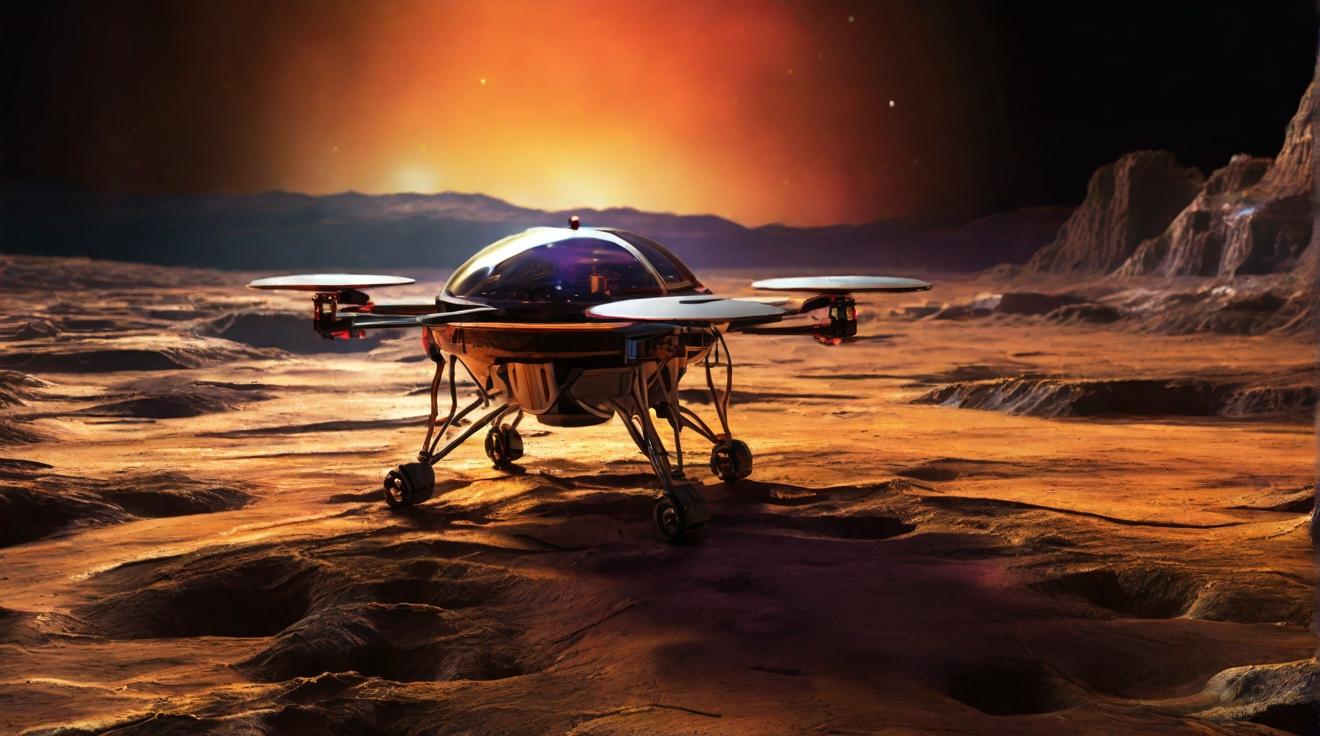NASA's Dragonfly Mission Progresses Towards Titan Exploration
NASA has recently made a significant announcement regarding the Dragonfly rotorcraft, marking its transition into the critical phases of final design, construction, and testing. This advancement sets the stage for the highly anticipated mission to Saturn's moon, Titan, with a launch slated for July 2028.
A car-sized drone, designed to explore the alien landscapes of Titan, is expected to land in 2034, revealing secrets of one of the solar system's most intriguing moons.
The mission, directed by the John Hopkins University Applied Physics Laboratory in partnership with Lockheed Martin, has highlighted the innovative landing strategy for Dragonfly. Unlike the complex landing system employed by NASA's Perseverance rover on Mars, Dragonfly will utilize a straightforward approach where the spacecraft releases the drone near Titan's surface, then activates its rotors for a controlled descent and landing.
The exploration of Titan is not just a scientific endeavor but a journey back to conditions similar to early Earth, offering insights into potential life origins.
Dragonfly's journey to Titan is anticipated with bated breath, particularly the critical moment of landing, echoing the tense atmosphere experienced during the Perseverance rover's Mars touchdown. The mission's success hinges on this crucial step, underscoring the importance of precision in space exploration.
NASA's Ingenuity helicopter on Mars has already demonstrated the viability of aerial exploration on other planets. Dragonfly aims to expand on this success, utilizing rotorcraft technology to traverse the diverse terrains of Titan. This mission is a testament to the ingenuity and forward-thinking approach of NASA's New Frontiers program.
The New Frontiers program, responsible for groundbreaking missions like New Horizons, Juno, and OSIRIS-REx, continues to push the boundaries of our understanding of the solar system.
With the Dragonfly mission, NASA not only aims to enhance our understanding of Titan but also to gather critical data that could shed light on the mysteries of life's origins and the conditions of early Earth. This ambitious project underscores humanity's unyielding quest for knowledge and the exploration of the final frontiers of space.
Analyst comment
The news is positive as it highlights the progress of NASA’s Dragonfly Mission towards Titan. The market can expect advancements in aerospace technology, potential discoveries about the origins of life, and increased interest in space exploration. This could lead to growth opportunities in the aerospace industry and scientific advancements related to space exploration.













